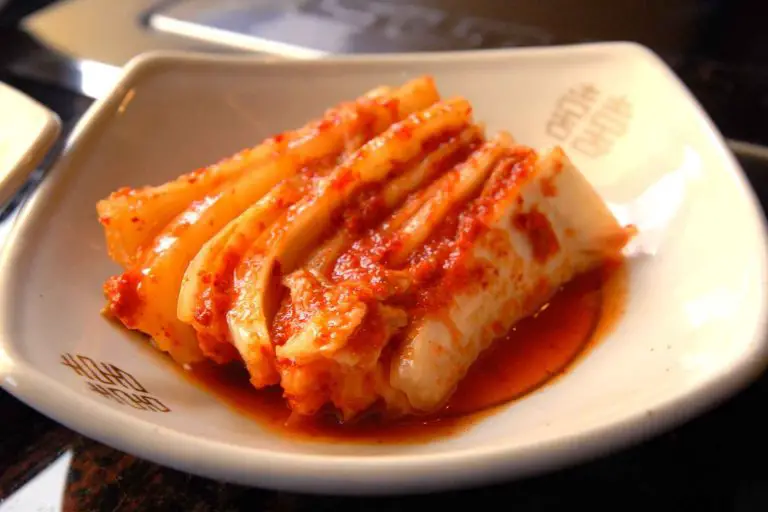Can Dogs Eat Clementines?

We often want to share fruit and other “human” food with our pets in an attempt to supplement their diets or give them a “healthy” treat for a change.
But most people are left wondering about the potential toxicity of fruit for dogs. For example, can dogs eat clementines? We’re exploring the specifics of this question today.
Dogs can eat clementines in moderation (a couple of fruit sections per day at most), but they shouldn’t eat the peels or the seeds. Some dogs enjoy eating clementines, but there are potential risks associated with eating the high-sugar fruit, like stomach upset.
Keep reading to learn more about how much clementine dogs can eat and the associated health benefits and risks.
Can Dogs Eat Clementines?
Dogs can eat clementines and tangerines (although some dogs don’t like high citrus fruits like this) as long as you keep the portions small.
Due to the following nutritional makeup (according to the US Department of Agriculture) of a single clementine, they aren’t the healthiest choice when it comes to feeding fruit to dogs:
- 35 calories
- 7 g sugar
- 9 g carbohydrates
- 1.3 g dietary fiber
- 0.6 g protein
- 1 mg sodium
- 0.1 g fat
Keep in mind that these nutritional qualities alone are not terrible for dogs.
However, certain nutrients (like fat, protein, and sugar) can add up too much when paired with your dog’s regular dog food diet, which already accounts for the right amount of these nutrients.
Are Clementines Toxic to Dogs?
Clementines are not inherently toxic to dogs, unlike other fruits such as grapes or cherries. The problem with clementines is mainly in the sugar or citric acid content.
According to Banfield Pet Hospital, clementines (and other citrus fruits) contain a decent amount of natural sugar.
Specifically, in dogs diagnosed as diabetic, too much glucose intake can become a severe problem. Specifically, diabetes mellitus (sugar diabetes) in canines results in difficulty converting sugar (glucose) into usable energy.
Therefore, diabetic dogs who eat clementines or other sugar-rich food can have blood glucose buildup and organ poisoning, leading to damage.
How Much Clementine Can Dogs Eat?
Dogs should not eat more than one or two small sections of a clementine daily.
Ideally, though, you wouldn’t be feeding your dog citrus fruit daily. Before you start feeding your dog any fruit on a semi-regular basis, you should start by testing the waters.
Take a small bite-sized piece of a clementine (smaller than a single section) without the peel, rinds, or seeds. Feed this small bite to your dog if they’ll take it, and make sure to monitor their bowel movements and comfort level for the next 24 hours or so.
If they respond well to the citrus fruit and sugar content, they should have normal stool with very few signs of stomach discomfort or illness.
If your dog passes this “test,” then you can probably start feeding them clementine as a more regular snack, not exceeding 1-2 sections in a period of 24 hours.
Keep in mind that smaller dogs tend to have more sensitive stomachs (Yorkies, Shih Tzus, etc.) and will only tolerate small portions of fruit anyway. To be sure of what your dog can tolerate, you may consult with a veterinarian first.
Risks of Dogs Eating Clementines
In addition to the aforementioned risks of diabetic dogs eating clementines, there are other issues to keep an eye on.
Too Much Fiber
Clementines are a type of orange hybrid, and studies have shown that the fiber in oranges can increase the moisture content of canine stool.
Dogs consuming this kind of fruit fiber were also linked to lower crude protein digestibility in the process.
Essentially, when you feed your dog clementines, you are running the risk of causing them diarrhea or watery stool. This is not only a mess to clean up but also a source of stress and discomfort for your pup and can lead to dehydration.
Other risks of consuming too much fiber from clementines include difficulty absorbing essential minerals in other food.
Remember that quality dog food already contains the right kind of healthy fiber that dogs need (from grain and legumes, for example). Therefore, you don’t need to supplement your dog’s diet with fiber from clementines.
Too Much Sugar
Aside from too much sugar negatively affecting diabetic dogs, it can also negatively affect healthy dogs in the following ways:
- Increasing the risk of developing diabetes
- Dental health issues
- Weight gain or risk of becoming overweight
- Gastrointestinal problems like diarrhea, vomiting, flatulence, and stomach pain
With a whopping 7 g of sugar in a single clementine, it’s easy to see how even a slice of clementine is more than the usual sugar intake for a dog.
To compare, keep in mind that most dog food doesn’t contain much sugar, to begin with. Although dogs can digest sugars, they rely more on protein for energy.
Too Much Citric Acid
Just as citric acid can be a digestive irritant to humans – causing indigestion, acid reflux, and other issues – it can irritate canine digestion, too.
Eating clementine and the included citric acid may lead to vomiting or diarrhea, particularly for dogs with sensitive stomachs.
Benefits of Dogs Eating Clementines
Clementines can be somewhat beneficial for dogs to eat. After all, they are a fruit rich in essential vitamins and nutrients.
Many people believe feeding their dogs orange fruits will help with their immune health.
Keep in mind that there are arguably more potential risks than actual benefits.
Vitamin C Intake
The extra Vitamin C in a clementine (about 36 mg per fruit) can be absorbed by your pup, but it isn’t really necessary.
Dogs get immune support from other nutrients in their daily dog food diets, such as probiotics and vegetables included in dog food recipes.
Vitamin B Intake
Dogs benefit from consuming Vitamin B, as it helps them assimilate fat and protein. And they can indeed get a bit extra Vitamin B from eating clementines.
But, again, they don’t need to eat clementines to get B vitamins into their diets.
Do Dogs Like Eating Clementines?
Finally, you may be asking yourself an essential question: do dogs even like eating clementines? It depends on your particular dog and whether it is a picky eater or has a sensitive stomach.
Some dogs will eat just about anything you put in front of them, even going so far as to eat food they shouldn’t have found in the first place.
These types of dogs may respond well if you hand them a slice of clementine.
But other dogs will likely turn their nose up to the fruit as the citrus in it is a typical turn-off for most dogs.
Further, dogs who have had a bad reaction to the fruit previously, like vomiting or diarrhea, might remember the event and go forward avoiding clementines.
Frequently Asked Questions
Can dogs eat clementine peels?
The peel or “skin” of any fruit can be potentially unsafe for dogs to eat because the peel is much more challenging and harder to chew than the fruit.
Dogs often swallow their food whole, meaning they might swallow without chewing and choke on it or get it lodged in their digestive tracts.
Can dogs eat clementine seeds?
Technically, dogs can eat clementine seeds, but you should remove the seeds before feeding the fruit to your pup.
Seeds can easily become a choking hazard or source of intestinal blockage.
Ingesting them may cause your dog gastrointestinal discomforts and symptoms like irregular stool, loose stool, or flatulence.
What is the best fruit for dogs?
Fruits like apples and blueberries are the best choice if you want to share with your dog because they’re rich in nutrients and non-toxic to canines.
They’re also less likely to cause stomach discomfort or digestive issues than other fruits because they’re low in fat and protein.
What fruit is bad for dogs?
Dogs should not eat grapes, cherries, or raisins, as these are toxic to canine kidneys. Persimmons, grapefruit, and other citrus fruits are technically safe for dogs, but they can cause health problems when eaten in excess.
Final Thoughts
Hopefully, our guide has thoroughly answered your question: Can dogs eat clementines? Clementines are a nutritious fruit and source of immune support for humans. But for dogs, they pose problems, such as too much sugar, too much fiber, and too much citric acid.
While clementines aren’t toxic to dogs, you should only feed a dog a maximum of 1-2 small fruit sections per day.
Don’t feed dogs the peels or seeds, as these can become choking hazards. And remember that fruit, including clementines, is not acceptable in the diet of dogs with health issues such as diabetes.






